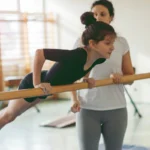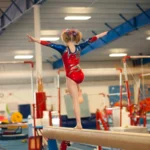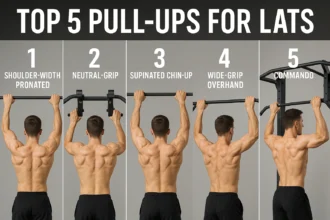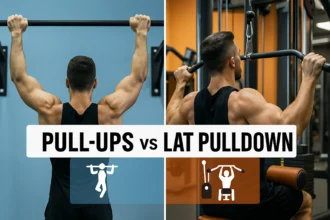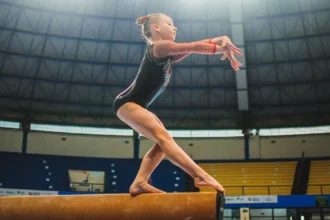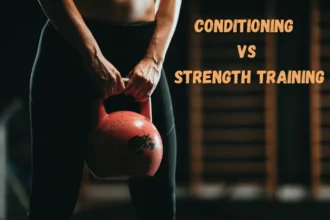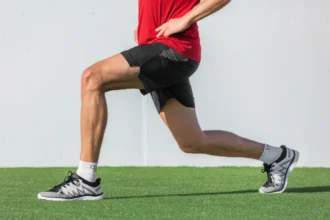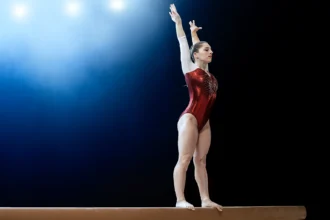Gymnasts embody agility, flexibility, and explosive strength, while bodybuilders focus on sculpted physiques and raw power. What happens when these two disciplines collide in a series of fitness challenges?
This video offers a fascinating glimpse into the differences between gymnasts and bodybuilders, putting their unique strengths to the test.
Challenge 1: The Box Jump
The first challenge was a classic box jump—a straightforward test of explosive power and leg strength. The rules? Jump onto progressively higher platforms until one person stands victorious.
- The Gymnasts: Known for their explosive power, the gymnasts leapt onto the initial platforms with ease. Their precise movements and refined technique gave them a clear edge early on.
- The Bodybuilders: Armed with raw strength and powerful legs, the bodybuilders impressed with their effort. However, as the platforms grew taller, agility became a limiting factor.
Winner: The bodybuilders clinched the first point, surprising the gymnasts with their resilience and determination.
Challenge 2: Box Jump with a Push-Up
This challenge added a twist—competitors had to start in a push-up position before launching onto the box. It was a hybrid test of upper-body strength, explosive power, and coordination.
- The Gymnasts: Their experience in floor routines and strength conditioning made this second nature. They powered through with precision and efficiency.
- The Bodybuilders: Despite their bulk, the bodybuilders held their own, demonstrating impressive core strength and grit.
This round was closely contested, but the gymnasts demonstrated superior efficiency and technique, narrowly edging out the bodybuilders.
Winner: Gymnasts.
Challenge 3: Weighted Dips
The third challenge tested upper-body strength and endurance. Competitors had to perform dips while adding weights equivalent to a significant percentage of their body weight.
- Ryan Terry: As expected, Ryan excelled, confidently lifting close to 100% of his body weight. His upper-body strength was unmatched.
- The Gymnasts: Though not as focused on isolated strength, the gymnasts held their own. Years of training on rings and bars gave them solid form and endurance, even if they couldn’t match Ryan’s raw power.
Winner: The bodybuilders dominated this round with their impressive strength.
Challenge 4: Core Strength Face-Off
The final test was all about core strength—a gymnast specialty. Competitors anchored their feet and placed their hands on their shoulders, holding a horizontal plank for as long as possible.
- The Gymnasts: Core control is second nature to gymnasts, and they held the position effortlessly. Years of training for stability and balance paid off.
- The Bodybuilders: While their strength was evident, maintaining the position was more challenging due to their heavier builds.
Winner: Gymnasts, closing the competition with a decisive win.
The Results and Reflections
In the end, the competition was a fun, lighthearted way to showcase the unique strengths of gymnasts and bodybuilders.
While bodybuilders focus on building size and strength, gymnasts concentrate on functional strength, agility, and flexibility. Both approaches are effective in their own right, but it’s clear that when it comes to tests of full-body control, explosiveness, and endurance, gymnasts take the crown.
How Gymnasts Build Strength Without Bulking Up
Watching the gymnasts perform raises an interesting question: How do they achieve such incredible strength without the bulky muscles typical of bodybuilders?
- Strength Isn’t About Size
Strength is about how much force your muscles can produce—not just their size. Gymnasts focus on improving the way their nervous system communicates with their muscles. This helps them activate more muscle fibers simultaneously, generating power without adding bulk.
- Training for Efficiency
Gymnasts train their bodies to use their muscles more effectively. This involves recruiting motor units—groups of muscle fibers activated by nerves—in a way that maximizes strength without increasing muscle size.
- Sharpening the Mind-Muscle Connection
The neuromuscular junction, where nerves connect to muscles, is key to a gymnast’s strength. Gymnastics training enhances this connection, making it faster and more efficient. The result? Muscles that are not just strong, but also highly responsive and coordinated.
Training for Coordination, Not Bulk
Why don’t gymnasts aim to build big muscles? Simple: muscle mass adds weight. Having too much muscle mass can make it harder to perform complex movements and flips. Gymnasts focus on training these fibers to work more efficiently, rather than increasing their number.
Some of the most effective movements include:
- Push-ups
- Inverted rows
- Pull-ups
- Dips
- Static holds like handstands and levers
These movements engage multiple muscle groups and teach the body to send faster, stronger signals to the muscles. Over time, gymnasts learn to activate more muscle fibers simultaneously, improving their strength without increasing muscle size.
Gymnasts also train for explosiveness—performing fast, powerful movements like jumps and swings. These types of exercises teach the muscles to respond quickly and forcefully. As the nervous system adapts, it becomes better at activating muscles rapidly, further enhancing strength and power.
Final Thought
Gymnasts prove that you don’t need massive muscles to be incredibly strong and agile. Their training focuses on quality, coordination, and efficiency, showing that strength is about more than just size. Whether you’re a gymnast or not, there’s a lot to learn from their approach to fitness: train smart, stay consistent, and aim for functional strength.



